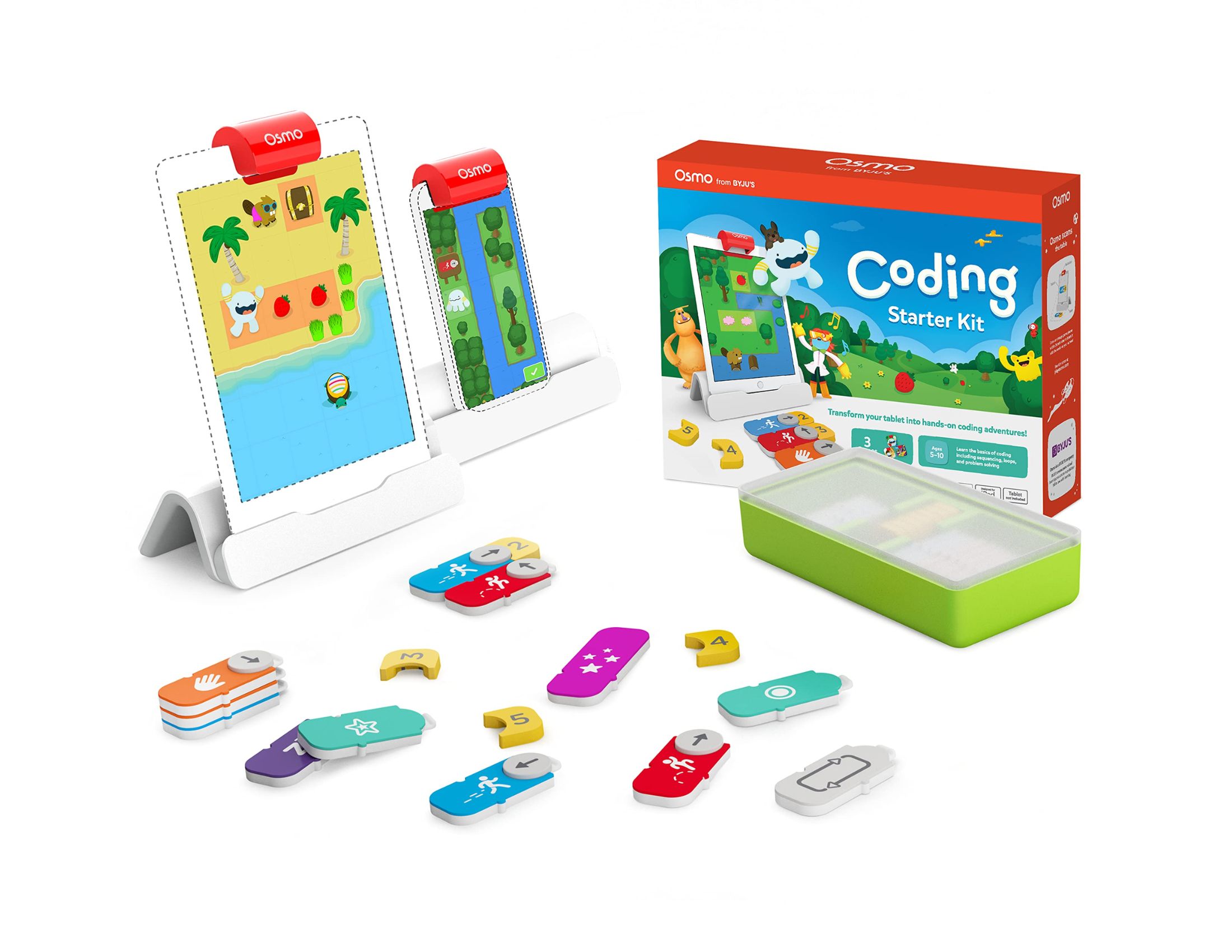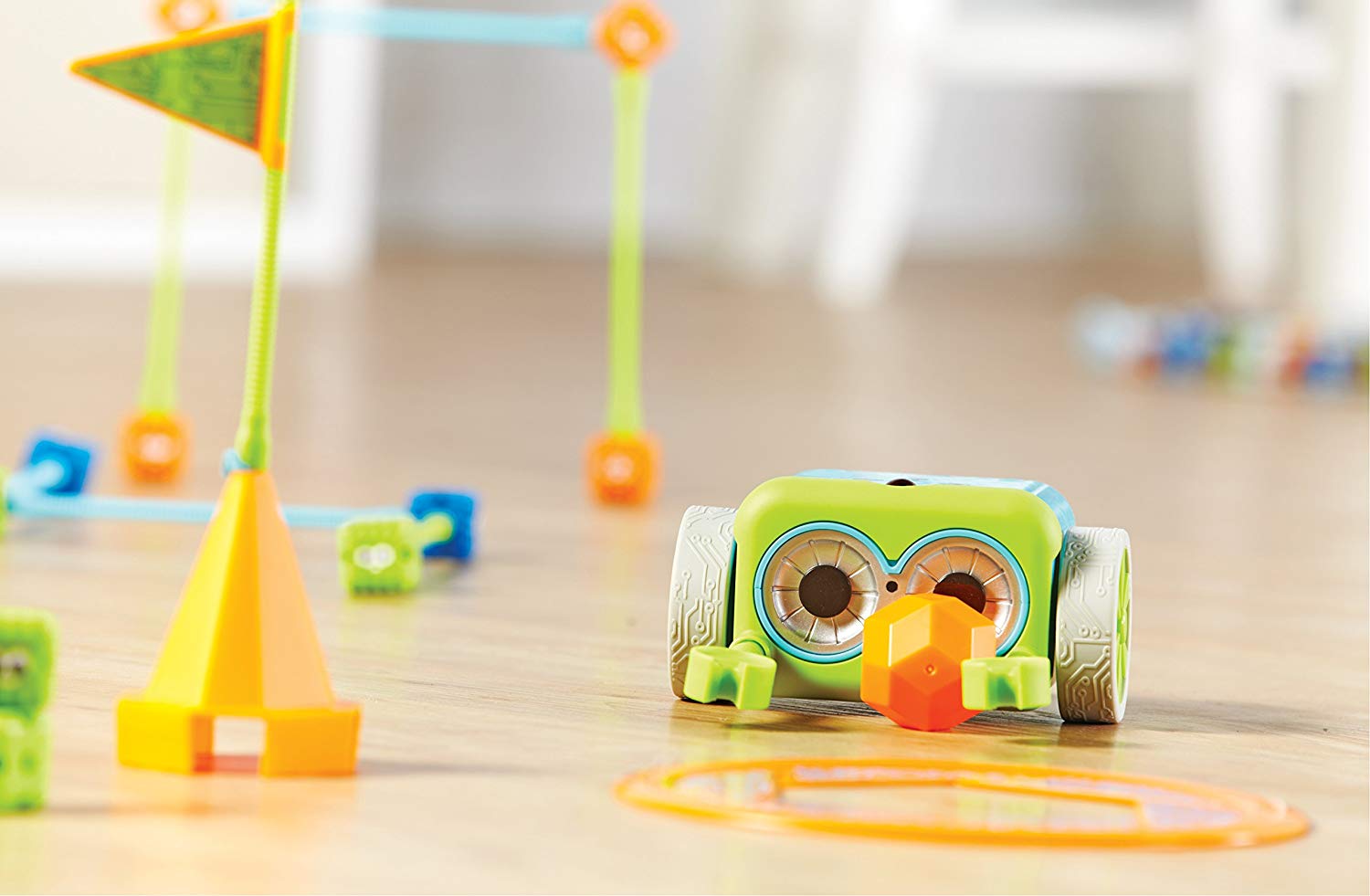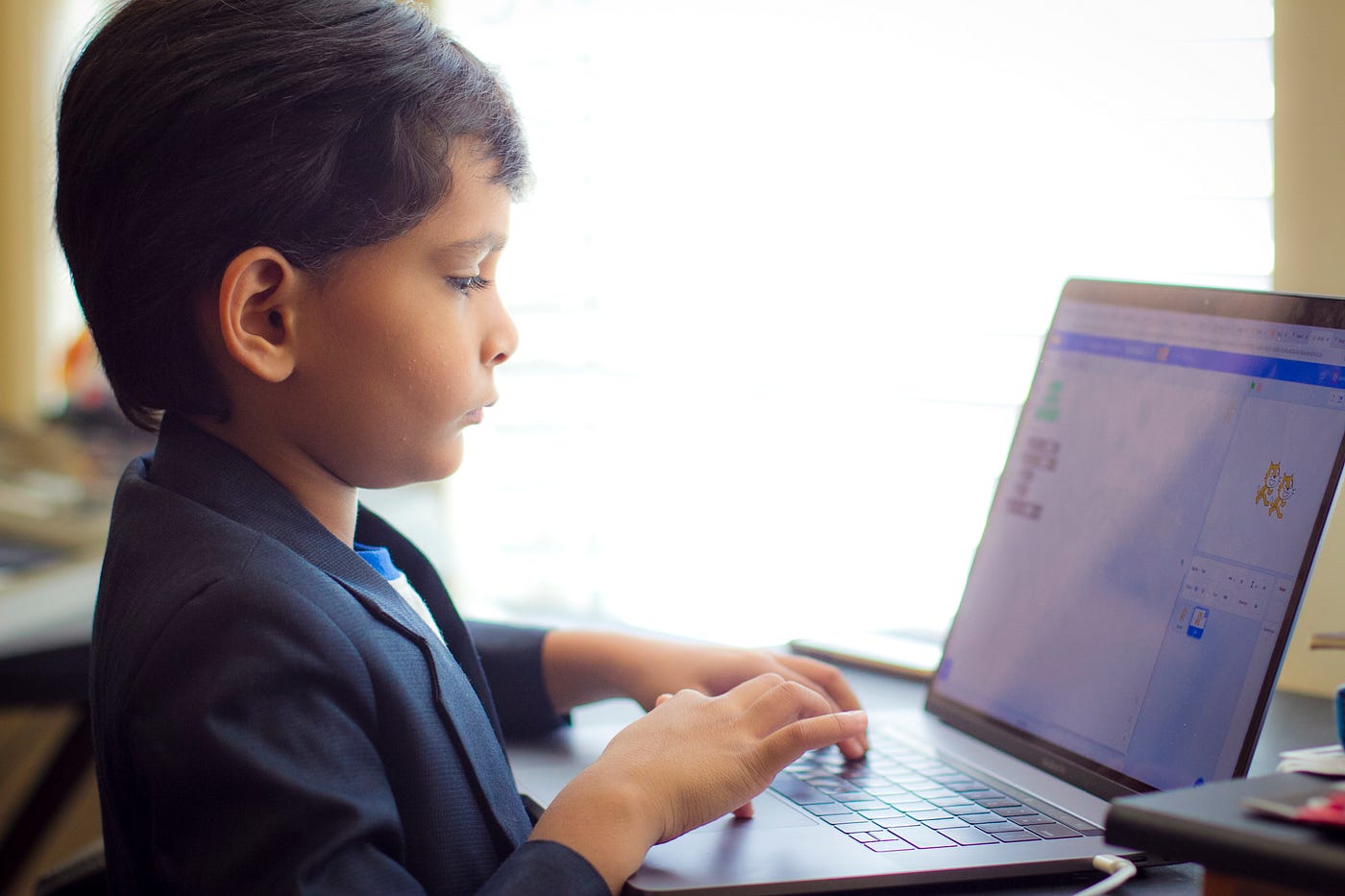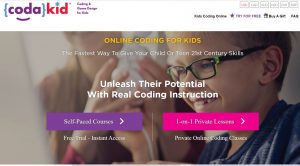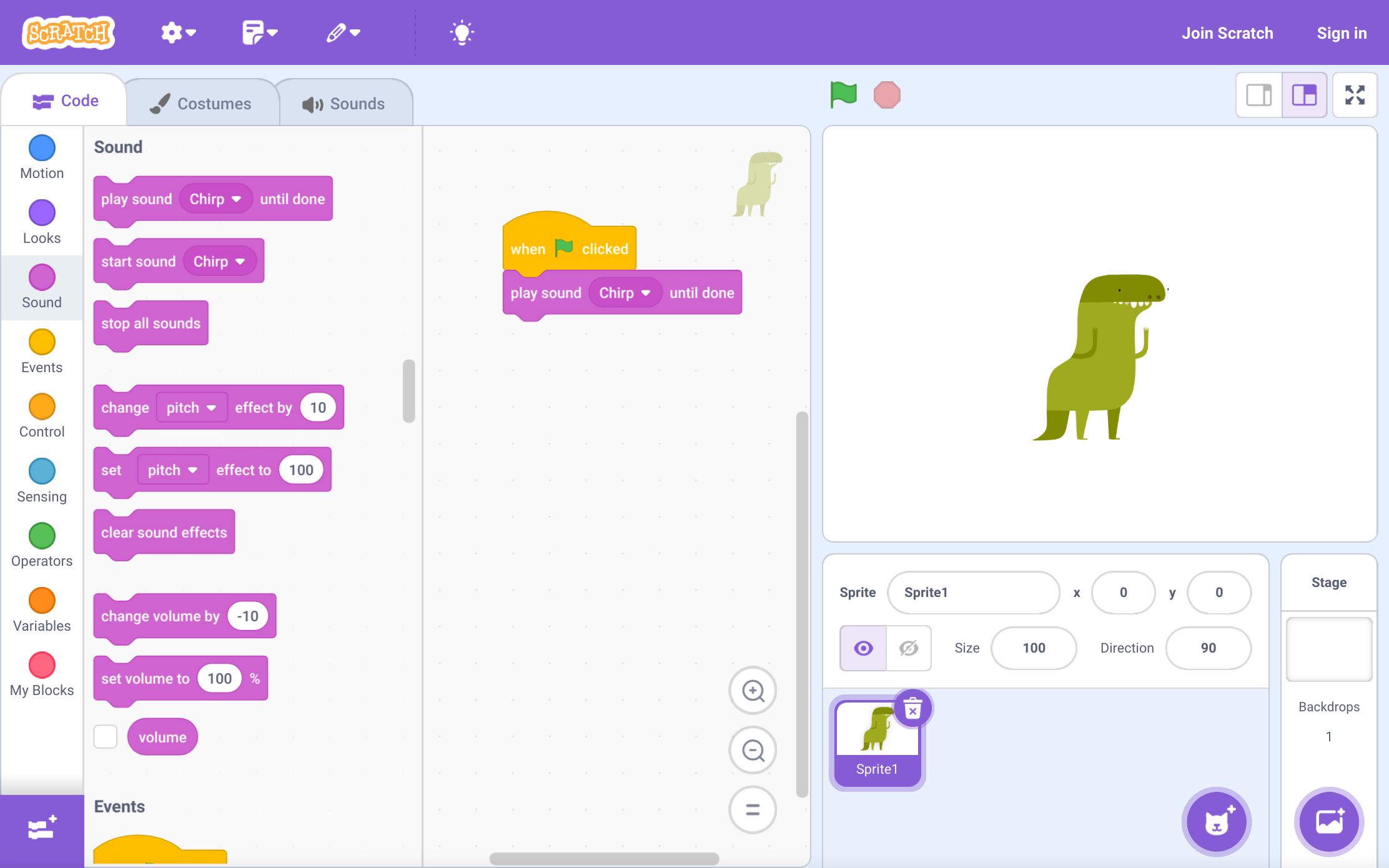Introduction
Welcome to the exciting world of coding! With technology becoming an integral part of our daily lives, it’s essential for kids to learn coding at an early age. Coding teaches valuable skills, such as problem-solving, logical thinking, and creativity, that can benefit children in various aspects of their lives.
Learning to code may seem daunting at first, but with the right approach, it can be a fun and engaging experience for kids. This article will guide you through the process of teaching coding to kids, from choosing the right programming language to providing a supportive learning environment.
By teaching kids coding, we empower them to become creators rather than just consumers of technology. They can develop their own websites, design mobile apps, and even create video games. Coding enables kids to express their creativity and turn their ideas into reality.
Furthermore, learning to code equips kids with essential skills for the future job market. In our increasingly digital world, coding is a valuable asset that opens doors to a wide range of career opportunities. By starting early, kids have a head start in developing the skills needed for the jobs of tomorrow.
So let’s dive in and explore the exciting journey of teaching kids coding. Whether you’re a parent, teacher, or mentor, this guide will provide you with the tools and resources to ignite a passion for coding in the young minds of tomorrow.
Why Should Kids Learn Coding?
In today’s digital age, coding has become an essential skill for kids to acquire. Here are a few compelling reasons why teaching coding to kids is beneficial:
- Fosters problem-solving skills: Coding challenges children to think critically and find solutions to problems. It encourages them to break down complex tasks into smaller, manageable parts and develop a logical approach to problem-solving, which is applicable beyond coding and in various real-life scenarios.
- Enhances creativity: Coding allows children to express their creativity by creating their own websites, animations, stories, and more. It encourages them to think outside the box, experiment, and innovate. Through coding projects, kids can bring their ideas to life and see the results of their imagination and creativity.
- Develops computational thinking: Coding teaches kids to think in a structured, algorithmic way. It helps them understand how to analyze problems, break them down into step-by-step procedures, and systematically solve them. Computational thinking is a valuable skill that can be applied to various areas, not just coding.
- Boosts confidence and resilience: Coding is a rewarding and challenging activity. By overcoming coding obstacles and successfully completing projects, kids develop a sense of accomplishment and gain confidence in their abilities. They learn to persevere, troubleshoot issues, and learn from failures, fostering resilience and a growth mindset.
- Prepares for the future: In our technology-driven world, coding skills are increasingly in demand across various industries. By learning to code early on, kids gain a competitive edge, opening doors to exciting career opportunities in fields like software development, data science, artificial intelligence, and more.
Overall, teaching kids to code equips them with essential skills for the future while promoting critical thinking, creativity, problem-solving, and confidence. It empowers them to become active creators and contributors to our digital society.
Choosing the Right Programming Language for Kids
When it comes to teaching coding to kids, choosing the right programming language is crucial. Here are some factors to consider when selecting a language:
- Simplicity and ease of learning: Look for a programming language that is beginner-friendly and has a simple syntax. Languages like Scratch, Blockly, and Python are great options for kids as they are designed with simplicity in mind and have a gentle learning curve.
- Engaging visual elements: Visual programming languages that incorporate colorful blocks or graphical interfaces are often more appealing to young learners. These visual elements make coding more tangible and enable kids to see immediate results, keeping them motivated and excited about learning.
- Availability of resources and support: It’s important to choose a language that has a wide range of resources, tutorials, and communities available. This ensures that you and your child have access to support, guidance, and additional learning materials as they progress in their coding journey.
- Real-world applications: Select a language that has real-world applications and can be used to create tangible projects. This helps kids see the practical aspect of coding and how it can be used to solve real-life problems or create something meaningful.
- Compatibility with learning tools: Consider the compatibility of the programming language with the learning tools and platforms you plan to use. Some languages are specifically designed for certain educational platforms or environments, so ensuring compatibility will make the learning process smoother.
Scratch is an excellent choice for beginners, as it is a block-based language that offers a visually appealing interface and a vast community of developers and resources. Blockly, another block-based language, is also worth considering, as it seamlessly transitions learners to textual programming through its “switch to code” functionality.
Python is a popular textual programming language that is suitable for kids who are ready to take on more complex challenges. With its straightforward syntax, extensive library support, and versatile applications, Python offers an excellent pathway for young learners to explore and expand their coding skills.
Ultimately, the right programming language for kids will depend on their age, interests, and learning goals. It’s important to choose a language that captures their attention, is age-appropriate, and provides a solid foundation in coding principles.
Setting Up the Learning Environment
Creating a supportive and conducive learning environment is essential when teaching kids coding. Here are some key aspects to consider:
- Dedicated workspace: Designate a specific area for coding activities. A clean and organized workspace with a comfortable chair, proper lighting, and minimal distractions helps kids stay focused and engaged. Make sure they have access to a computer or laptop with the necessary software and tools.
- Time for exploration: Allow kids to explore and experiment with coding at their own pace. Encourage them to play around with coding blocks, try different programming concepts, and discover their own solutions. Be patient and supportive, giving them the freedom to make mistakes and learn from them.
- Hands-on activities: Incorporate interactive and hands-on coding activities to make learning more engaging. Encourage kids to participate in coding challenges, game development projects, or building simple websites. These activities provide practical application opportunities and allow children to see the direct results of their coding efforts.
- Collaborative learning: Foster a sense of collaboration and peer learning by organizing coding clubs or partnering kids with coding buddies. This allows them to share ideas, problem-solve together, and learn from one another. Collaborative learning not only enhances their coding skills but also promotes teamwork and communication.
- Recognition and rewards: Celebrate kids’ milestones and achievements to boost their motivation and confidence. Provide positive reinforcement, recognition, and small rewards for their coding progress, such as certificates, badges, or showcasing their projects to friends and family. This encourages a sense of accomplishment and encourages them to continue exploring coding.
- Supportive resources: Ensure access to a variety of coding resources, including books, online tutorials, coding apps, and educational websites. These resources can provide additional guidance and help kids advance their coding skills. Utilize interactive learning platforms that offer gamified coding lessons, allowing kids to learn in a fun and interactive way.
Remember, creating an environment where kids feel comfortable to explore, make mistakes, and grow is essential for their success in learning coding. By nurturing their curiosity and providing them with the right tools and support, you can set them up for an enjoyable and enriching coding learning experience.
Introducing Basic Coding Concepts
When teaching kids coding, it’s important to start with the basics and gradually build their understanding of coding concepts. Here are some fundamental coding concepts to introduce to kids:
- Sequence: Teach kids that coding is like giving instructions. Explain that a sequence of instructions is written in a specific order and that the computer will execute them one by one. Use real-life examples to help them understand the importance of following a sequence.
- Loops: Introduce the concept of loops, which allow a series of instructions to be repeated multiple times. Show kids how loops can be used to automate tasks and save time. Encourage them to experiment with loops and create projects where actions are repeated, such as drawing shapes or playing a sound.
- Conditions: Teach kids about conditional statements, which allow the computer to make decisions based on certain conditions. Explain the concept of “if-else” statements and how they can be used to control the flow of a program. Help kids understand how conditions can be used to create interactive programs or games.
- Variables: Introduce the concept of variables, which are used to store and manipulate data in a program. Teach kids how to declare variables, assign values, and update them. Show them how variables can be used to create dynamic programs that respond to user input or change over time.
- Events: Familiarize kids with the concept of events, which are actions or occurrences that trigger specific instructions in a program. Help them understand how events can be used to create interactive programs that respond to user interactions, such as button clicks or mouse movements.
- Debugging: Explain to kids that debugging is the process of identifying and fixing errors in a program. Teach them strategies for finding and resolving bugs, such as reading error messages, checking code for typos, and systematically testing different parts of the program.
It’s important to introduce these concepts gradually and reinforce them through hands-on activities and coding projects. Start with simple exercises where kids practice sequencing, then gradually introduce loops, conditions, variables, events, and debugging techniques as they gain confidence and understanding.
Remember to use engaging and interactive examples to make these concepts relatable and enjoyable for kids. By building a solid foundation in these basic coding concepts, children will have the knowledge and skills to tackle more complex coding challenges in the future.
Fun Coding Projects for Kids
Engaging kids in hands-on coding projects is an excellent way to foster their interest and curiosity. Here are some fun coding projects that kids can explore:
- Creating a Story or Animation: Encourage kids to use coding to bring their ideas to life by creating interactive stories or animations. Platforms like Scratch or Code.org offer user-friendly interfaces and tools that allow kids to design characters, create dialogue, and add animations and sound effects.
- Building a Simple Website: Introduce kids to web development by guiding them through building a simple website. They can learn the basics of HTML and CSS to design web pages, add images, create links, and even add interactive elements using JavaScript. This project allows kids to showcase their creativity and share their interests with others.
- Designing a Video Game: Coding can be a gateway to creating their own video games. Kids can start with simple game development projects using platforms like Scratch or Construct 3. They can design characters, create game levels, and add gameplay mechanics using coding concepts like conditions and variables.
- Building a Chatbot: Introduce kids to the world of artificial intelligence by guiding them in creating a chatbot. They can use platforms like Chatfuel or Dialogflow to design conversational experiences. This project allows kids to understand how chatbots work and how coding can be used to create interactive and helpful virtual assistants.
- Developing a Mobile App: For kids interested in mobile app development, they can try their hand at building a simple app using platforms like MIT App Inventor or Thunkable. They can design the user interface, add functionality, and test their app on their smartphones or tablets. This project allows kids to explore the world of app development and unleash their creativity.
Encourage kids to personalize these projects based on their interests and preferences. Let them experiment, make mistakes, and learn from them. Provide guidance and resources, but also allow them to take ownership of their projects and explore their own ideas. Celebrate their achievements and showcase their projects to friends and family, boosting their confidence and inspiring them to pursue further coding projects.
Remember, the goal is to make coding enjoyable and exciting for kids. By engaging in these fun coding projects, they can develop their coding skills while unleashing their creativity and imagination.
Encouraging Creativity through Coding
Coding is not just about logic and problem-solving; it’s also a powerful tool for fostering creativity in kids. Here are some ways to encourage creativity through coding:
- Promote Open-Ended Projects: Encourage kids to embark on open-ended coding projects that allow room for creativity and imagination. Instead of providing step-by-step instructions, let them explore different possibilities and come up with their own solutions. This freedom to create and experiment sparks their creativity.
- Integrate Art and Design: Merge coding with art and design by encouraging kids to create visually appealing projects using colors, shapes, and animations. Show them how coding concepts like variables and loops can be used to create dynamic and interactive visual elements. This combination of coding and visual design enhances their creativity and aesthetic sensibilities.
- Encourage Remixing and Modifying: Teach kids that coding is not just about starting from scratch. Show them how they can remix and modify existing projects to create something new. Allow them to explore code repositories and online communities to find inspiration and build upon the work of others. This process encourages creative thinking and problem-solving.
- Support Project-Focused Learning: Foster a project-based learning approach where kids choose coding projects based on their interests. Allow them to delve into topics they are passionate about, whether it’s creating a game, building a website, or developing an app. By aligning coding with their interests, kids are more motivated to explore their creativity.
- Encourage Experimentation: Emphasize the importance of experimentation and embracing failures in the coding process. Let kids know that mistakes are part of the learning journey and that they can lead to new discoveries and innovative solutions. Encourage them to think outside the box, try new ideas, and take risks in their coding projects.
- Provide Opportunities for Collaboration: Foster collaboration and teamwork by encouraging kids to work on coding projects together. Group coding activities allow them to exchange ideas, share insights, and learn from their peers. Collaboration sparks creativity through the synergy of different perspectives and ideas.
By integrating creativity into coding, kids are not just developing technical skills but also nurturing their imagination, problem-solving abilities, and innovative thinking. Celebrate and showcase their creative coding projects, providing them with a platform to share their work with others. This recognition and validation inspire them to continue exploring their creativity through coding.
Remember, coding is a tool for self-expression, and by encouraging creativity in coding, we empower kids to use technology as a canvas for their ideas, allowing them to shape the digital world in their own unique ways.
Utilizing Online Resources and Coding Apps for Kids
With the advancement of technology, there is an abundance of online resources and coding apps available to support kids in their coding journey. Here are some ways to make the most of these resources:
- Interactive Learning Platforms: Utilize interactive learning platforms designed specifically for kids, such as Code.org, Scratch, Tynker, or codeSpark Academy. These platforms offer engaging coding lessons, games, and projects, making learning fun and accessible to children of all ages.
- Tutorial Websites and Videos: Take advantage of tutorial websites and coding videos for kids. Websites like Khan Academy, codecademy, or TED-Ed offer step-by-step guides and video tutorials that cover various coding concepts. These resources can provide additional explanations and examples to deepen kids’ understanding of coding.
- Online Coding Communities: Involve kids in online coding communities where they can collaborate, ask questions, and seek inspiration from other young coders. Platforms like Scratch, Code.org, or GitHub have supportive communities where kids can share their projects, receive feedback, and learn from others.
- Mobile Coding Apps: Explore coding apps designed for mobile devices, such as Hopscotch, Swift Playgrounds, or Kodable. These apps offer interactive and gamified coding experiences that can be accessed anytime, anywhere. They provide a convenient way for kids to practice coding skills on-the-go.
- Virtual Coding Classes: Enroll kids in virtual coding classes or coding camps designed for their age group. Many organizations and educational institutions offer online coding programs that provide structured lessons, mentorship, and opportunities for interactive learning and collaboration with peers.
- Coaching and Online Tutors: Consider seeking the guidance of coding coaches or online tutors who can provide one-on-one support and personalized guidance for kids. They can help answer questions, provide feedback, and offer additional challenges to further enhance kids’ coding skills.
By utilizing these online resources and coding apps, kids can explore coding at their own pace, access a wealth of educational material, and actively engage in the learning process. These resources provide a supportive framework that complements and reinforces the concepts taught in traditional learning environments.
However, it’s important to balance online learning with offline activities. Encourage kids to apply their coding skills in real-life projects, experiment independently, and engage in face-to-face interactions with peers and mentors. This ensures a holistic learning experience that incorporates both digital and hands-on aspects.
Remember, online resources and coding apps are valuable tools that can inspire, guide, and enhance kids’ coding learning. Embrace these resources as aids in the journey of sparking a passion for coding in young minds.
Building Problem-Solving Skills with Coding
Coding is a powerful tool that helps kids develop essential problem-solving skills. Here’s how coding contributes to problem-solving abilities:
- Logical Thinking: Coding requires breaking down complex problems into smaller, manageable steps. It teaches kids to think logically and analyze problems from different angles. By approaching problems systematically, kids learn to identify patterns, determine cause and effect relationships, and develop structured solutions.
- Algorithmic Approach: Coding introduces kids to algorithms, which are step-by-step instructions for solving problems. It trains them to think algorithmically, helping them understand the importance of order and sequence in problem-solving. Kids learn to decompose problems, identify the necessary steps, and organize them in a logical manner.
- Debugging and Troubleshooting: When coding, kids often encounter errors and bugs that need to be resolved. This process of debugging challenges kids to analyze code, identify the source of errors, and apply critical-thinking skills to fix them. Debugging helps kids develop a problem-solving mindset by persistently investigating issues and finding solutions.
- Iterative Problem Solving: Coding emphasizes the iterative process of problem-solving. Kids learn to test their code, receive feedback, and make necessary adjustments. This iterative approach fosters resilience and adaptability, teaching kids that solving problems often requires multiple attempts and continuous refinement.
- Creative Thinking: Problem-solving in coding often requires thinking outside the box and coming up with innovative solutions. Kids are encouraged to approach challenges with creativity and explore alternative solutions. Coding empowers children to find unique ways to address problems while learning the value of experimentation and innovation.
- Real-World Applications: Coding offers practical applications in solving real-world problems. It enables kids to create programs that automate tasks, analyze data, or provide solutions to everyday challenges. By applying coding skills to real-world scenarios, kids see the direct impact of their problem-solving abilities.
By engaging in coding activities that promote problem-solving, kids develop essential skills and mindsets that extend beyond coding itself. These problem-solving skills can be applied in various aspects of their lives, such as academics, decision-making, and future career opportunities.
Encourage kids to practice problem-solving through coding challenges, puzzles, and projects. Celebrate their successes and guide them through the process of overcoming obstacles. Help them develop a growth mindset, where they embrace challenges, persist through setbacks, and view failures as opportunities for learning and growth.
Remember, coding not only equips kids with technical skills but also empowers them with problem-solving abilities that serve them well in an increasingly complex and dynamic world.
The Importance of Practice and Patience
When it comes to learning coding, practice and patience play a crucial role. Here’s why these two elements are important in the coding journey:
- Building Proficiency: Coding is a skill that requires consistent practice. The more kids practice coding, the more proficient they become. Regular practice helps them internalize coding concepts, develop muscle memory for programming syntax, and improve problem-solving abilities. Just like any skill, coding requires dedicated practice to master.
- Reinforcing Learning: Through practice, kids reinforce what they’ve learned and gain a deeper understanding of coding concepts. Repetition helps solidify coding principles and makes them more intuitive. It also allows kids to apply what they have learned to solve different coding challenges, enhancing their coding fluency.
- Encouraging Perseverance: Coding can be challenging, and kids may encounter obstacles or struggle to find solutions. Practice cultivates a sense of perseverance, teaching kids to persist through difficult coding tasks. It helps them develop the tenacity to tackle complex problems and not give up easily when faced with challenges.
- Improving Problem-Solving Skills: Coding practice sharpens kids’ problem-solving skills. Regularly working through coding challenges and projects exposes them to a variety of problems, increasing their ability to analyze, break down, and find solutions. With practice, kids become more adept at troubleshooting, debugging, and developing efficient algorithms.
- Fostering Creativity: Practice allows kids to explore their creativity in coding. Regularly working on coding projects and experimenting with different ideas spark new creative insights. Through practice, kids become more comfortable taking risks, trying out new approaches, and developing innovative solutions to coding problems.
- Bolstering Confidence: Consistent practice builds kids’ confidence in their coding abilities. As they see their skills improving over time, their self-assurance grows. Frequent practice helps them overcome challenges, gain a sense of accomplishment, and boosts their belief in their own coding capabilities.
- Cultivating Patience: Coding requires patience. It may take time to find the right solution or understand complex concepts fully. By practicing coding, kids develop patience. They learn to approach coding challenges with a calm and focused mindset. Patience allows kids to persevere through coding difficulties and embrace the learning process with a positive attitude.
Encourage kids to set aside regular time for coding practice, whether it’s daily or a few times a week. Provide them with coding exercises, challenges, and projects to work on independently. Celebrate their progress and achievements as they demonstrate commitment and growth in their coding skills.
It’s important to remind kids that coding is a journey, and mastery takes time. Encourage them to be patient with themselves, embrace the learning process, and view challenges as opportunities for growth. With consistent practice and patience, kids will continue to improve their coding abilities and unlock new possibilities in the world of technology.
Providing Support and Feedback
Support and feedback are essential components when it comes to teaching coding to kids. Here’s why providing support and feedback is crucial for their learning journey:
- Encouraging Growth: Supportive guidance helps kids develop a growth mindset, where they believe their coding abilities can improve with effort and practice. By offering support, mentors and parents can foster an environment where kids feel empowered to take risks, explore, and learn from their coding experiences.
- Clarifying Concepts: Coding can be complex, so providing clear explanations and answering kids’ questions helps them grasp coding concepts more effectively. Be patient and encourage them to ask for help when needed. Break down concepts into simpler terms and provide real-life examples to make coding more relatable and understandable.
- Offering Breakdown of Challenges: When kids face coding challenges, support them by breaking down the problem into smaller parts. Guide them through the problem-solving process step-by-step, offering strategies and encouraging them to think critically. This support helps them develop problem-solving skills and enables them to tackle more complex coding challenges independently.
- Providing Resources and Tools: As a mentor or parent, provide kids with resources, coding tools, and references to enhance their learning experience. This can include coding books, online tutorials, educational websites, coding apps, and community forums where they can find additional support and inspiration. Sharing these resources gives kids the tools they need to explore coding further.
- Offering Constructive Feedback: Feedback plays a crucial role in kids’ learning process. Provide constructive feedback on their coding projects, pointing out areas of improvement while also acknowledging their strengths. Focus on specific aspects such as code organization, problem-solving strategies, or creative elements. This feedback helps kids understand their progress, motivates them to continue learning, and guides them towards best practices.
- Promoting Peer Collaboration: Encourage kids to work collaboratively with their peers on coding projects. Peer collaboration allows them to share ideas, learn from one another, and offer feedback. This fosters a supportive learning community where kids feel comfortable seeking help and understanding different perspectives.
- Celebrating Achievements: Celebrate kids’ achievements and milestones in coding both big and small. Acknowledge their progress, accomplishments, and efforts. This validation boosts their confidence and encourages them to continue exploring coding. Celebrations can include showcasing their projects to family and friends, awarding certificates, or organizing coding events to recognize their work.
Remember, providing support and feedback requires patience, empathy, and active engagement. By offering the right support and constructive feedback, mentors and parents can inspire and guide kids in their coding journey, ultimately helping them develop the skills and mindset needed to excel in coding and beyond.
Fostering a Growth Mindset in Kids
Developing a growth mindset is crucial when teaching coding to kids. Fostering a growth mindset helps them cultivate resilience, embrace challenges, and view failures as opportunities for learning and growth. Here are some ways to foster a growth mindset in kids:
- Encourage Effort and Persistence: Emphasize the importance of effort and persistence in the learning process. Teach kids that coding skills can be developed through practice and hard work. Encourage them to embrace challenges, persist through difficulties, and celebrate their progress and achievements along the way.
- Praise the Process, Not Just the Outcome: Instead of solely focusing on the end result, celebrate the efforts, strategies, and problem-solving approaches that kids employed. Highlight their perseverance, creativity, and critical thinking in their coding projects. This helps kids understand that the journey, improvement, and learning experience are equally valuable.
- Emphasize Learning from Mistakes: Frame failures and mistakes as opportunities for growth and learning. Encourage kids to embrace setbacks and analyze what went wrong. Help them understand that mistakes are a natural part of the learning process and offer valuable insights for improvement. Guide them in finding alternative solutions and encourage them to try again.
- Teach the Power of “Yet”: Encourage kids to adopt the mindset of “not yet” when facing challenges. Teach them that they might not have achieved a specific goal or mastered a coding concept yet, but with continuous effort and practice, they will get there. This perspective instills a sense of possibility and motivates them to keep pushing forward.
- Promote a Supportive Community: Foster a supportive environment where kids feel comfortable asking for help and sharing their challenges. Encourage group collaborations, where peers can offer support, learn from one another, and provide constructive feedback. This sense of community promotes collective growth and reinforces the belief that everyone has the potential to improve.
- Showcase Role Models: Introduce kids to coding role models who demonstrate a growth mindset. Share stories of successful coders who faced challenges and setbacks but persevered to achieve their goals. By highlighting these stories, kids can see firsthand that achievements are the result of determination, resilience, and continuous learning.
- Set Realistic Goals: Help kids set realistic, achievable goals in their coding journey. Break down larger goals into smaller, manageable tasks. Celebrate the completion of each milestone, reinforcing the idea that progress is made one step at a time. This approach encourages kids to stay motivated and build confidence as they accomplish smaller goals leading to larger achievements.
By fostering a growth mindset, kids develop a positive attitude towards challenges, embrace the learning process, and build resilience in the face of obstacles. This mindset empowers them to approach coding with an open mind, continuously seek improvement, and unleash their full potential.
Remember, cultivating a growth mindset is a journey that requires consistent reinforcement and modeling. By nurturing this mindset, you provide kids with valuable life skills that extend far beyond the realms of coding.
Inspiring Girls to Code
Encouraging girls to pursue coding and technology is crucial for a more diverse and inclusive tech industry. Here are some strategies to inspire and empower girls to code:
- Showcase Women in Tech: Highlight the achievements and contributions of women in the field of technology. Introduce girls to inspiring women who have made significant advancements in coding, such as Ada Lovelace, Grace Hopper, or Katherine Johnson. By showcasing these role models, girls can envision themselves as successful coders.
- Create Female-Centric Coding Communities: Foster a supportive and inclusive community that specifically targets girls. Encourage girls to join coding clubs, organizations, or online communities where they can connect with like-minded peers and mentors. Female-centric coding communities provide a safe and empowering space for girls to share experiences, exchange ideas, and learn together.
- Offer Coding Programs and Workshops: Provide coding programs and workshops tailored for girls. Design coding classes that incorporate projects and examples that are relevant and engaging to girls’ interests. By catering to their specific needs and preferences, girls can feel more confident and motivated to pursue coding.
- Show the Real-World Impact of Coding: Highlight the real-world impact of coding and how it can be used to address global challenges. Connect coding with fields such as healthcare, environmental sustainability, or social justice, illustrating how girls can make a difference through technology. Inspiring girls with the potential of coding helps them see its relevance and value.
- Promote Female Coding Role Models: Share stories and profiles of successful female coders, entrepreneurs, and innovators. Expose girls to diverse female coding role models who have achieved success in various coding domains. Representation matters, and seeing women who have succeeded in coding can inspire girls to believe in their own abilities.
- Organize Hackathons and Coding Competitions: Encourage girls to participate in hackathons and coding competitions. Create opportunities for them to demonstrate their skills, collaborate with peers, and showcase their coding projects. By participating in these events, girls gain confidence, build networks, and experience the thrill of coding in a competitive yet supportive environment.
- Support and Encourage STEM Education: Advocate for science, technology, engineering, and mathematics (STEM) education in schools. Support initiatives that promote equal access to STEM resources and encourage girls to pursue STEM subjects. By emphasizing the importance of a well-rounded STEM education, girls can see the long-term benefits and possibilities of coding.
By implementing these strategies, we can inspire a new generation of girls to pursue coding and technology. By breaking down barriers and creating inclusive opportunities, we can bridge the gender gap in the tech industry, ensuring diverse perspectives and unlocking the untapped potential of future female coders.
Collaborative Coding Activities for Kids
Collaborative coding activities provide a fantastic opportunity for kids to learn coding while developing important teamwork and communication skills. Here are some collaborative coding activities that can engage and inspire kids:
- Pair Programming: Pair programming involves two kids working together on the same coding task. One child acts as the “driver,” writing the code, while the other child is the “navigator,” providing guidance and looking out for errors. This activity encourages kids to learn from each other, communicate effectively, and practice problem-solving as a team.
- Coding Challenges: Organize coding challenges where kids work in small groups to solve coding problems or create projects. Encourage them to collaborate on finding solutions, exchanging ideas, and helping one another overcome obstacles. These challenges promote teamwork, creativity, and critical thinking skills.
- Group Coding Projects: Assign group coding projects where kids collaborate to design and develop a larger coding project. This could involve building a website, creating a game, or developing a mobile app. Group projects allow kids to pool their skills, exchange knowledge, and experience the collaborative nature of coding.
- Coding Workshops and Hackathons: Organize coding workshops or hackathons where kids work together in teams to tackle coding challenges or create innovative coding projects within a set timeframe. These events foster a sense of camaraderie, encourage the sharing of ideas, and provide a platform to showcase their collaborative coding projects.
- Code Reviews and Feedback Sessions: Encourage kids to conduct code reviews and provide feedback on each other’s coding projects. This activity teaches them coding best practices, improves their ability to read and understand code, and promotes constructive communication. Code reviews allow kids to learn from different coding styles and develop valuable insights into the coding process.
- Coding Community Contributions: Engage kids in collaborative coding activities within coding communities or open-source projects. Kids can contribute their coding skills to ongoing projects, work with other developers, and learn from experienced coders. This exposure to real-world coding collaboration enhances their skills and gives them a sense of being part of a larger coding community.
- Cross-Disciplinary Coding Projects: Encourage kids to collaborate with peers from different disciplines, such as art, music, or science, on coding projects. For example, they could develop a program that generates visuals in response to music or create a simulation of a scientific phenomenon. Cross-disciplinary projects foster creative thinking, collaboration, and the application of coding to different domains.
Collaborative coding activities provide kids with the opportunity to learn from one another, practice teamwork, and develop effective communication skills. These activities foster creativity, problem-solving, and the ability to work together towards a common goal.
Remember to create a supportive and inclusive environment where all participants feel comfortable expressing their ideas and contributing to the collaborative coding process. Celebrate the achievements of the collaborative coding teams, recognizing the combined effort and triumphs of working together.
Conclusion
Teaching coding to kids is an exciting journey that offers numerous benefits. By introducing kids to coding at an early age, we empower them with valuable skills, such as problem-solving, logical thinking, and creativity, that extend beyond the realm of technology. Coding helps kids develop computational thinking and equips them with essential skills for the future job market.
Throughout this guide, we have explored various aspects of teaching coding to kids. We discussed the importance of choosing the right programming language, setting up a supportive learning environment, and introducing basic coding concepts. We also explored fun coding projects, fostering creativity, utilizing online resources, building problem-solving skills, and providing support and feedback to kids. Additionally, we highlighted the significance of fostering a growth mindset, inspiring girls to code, and engaging in collaborative coding activities.
Remember, as a mentor, parent, or educator, your role is instrumental in guiding kids through their coding journey. Encourage them to practice, be patient, and embrace challenges. Offer support, constructive feedback, and access to resources that can enhance their learning experience. Foster an inclusive environment where all kids feel empowered, inspired, and supported in their coding endeavors.
By igniting a passion for coding in kids, we prepare them for a future that increasingly relies on technology. Coding opens doors to creative possibilities and equips kids with the skills necessary to thrive in a digital world. Through coding, we empower the next generation to become active creators, critical thinkers, and problem solvers, shaping the future of technology and driving positive change in our society.









